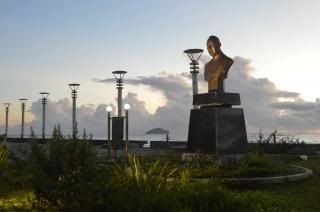
When the bust of Vicente L. Pimentel Sr. was put on a pedestal in the central part of the boulevard of Tandag City, tongues began wagging. A certain Aeonoel was commissioned to sculpt the image that took two years to finish. Made of concrete cement and moulded from plaster of Paris, the bust acquired a bronze patina from a Pylox vinyl spray.
People whine: How could the Pimentels do this to us? Don’t they have delicadeza? Understandably, the last one comes from people expecting the Pimentels to exercise restraint instead of perpetrating an act everybody perceives to be too self-serving as they are the sitting powers-that-be.
People are raising a howl because they couldn’t see the reason behind venerating the Pimentel patriarch with a boulevard that carries his name. Camp Vicente Pimentel in Telaje, yes, they say, because the Pimentels donated the land on which the military camp stands. But the boulevard?
Pray tell: What’s the rule on this?
The National Historical Commission of the Philippines has issued the Revised Guidelines on the Naming and Renaming of Streets, Public Schools, Plazas, Building, Bridges and other Public Structures. Section IV [Naming/Renaming after Persons] provides, thus: Street, plaza or any public place may be named or renamed to honor a person or family who contributed to the welfare of the Filipino people.
Oh well, the phrase "who contributed to the welfare of the Filipino people" provides a wide latitude to play around.
It is a public knowledge that Vicente Luna Pimentel Sr. was a lawyer who became an assemblyman and a Constitutional Convention delegate during the time of President Ferndinand Marcos. Pimentel has always been described as the patriarch and pillar of Surigao del Sur politics he being the first governor of the once undivided Surigao.
(Photo credit: Jonathan V. Lagang)

No comments:
Post a Comment